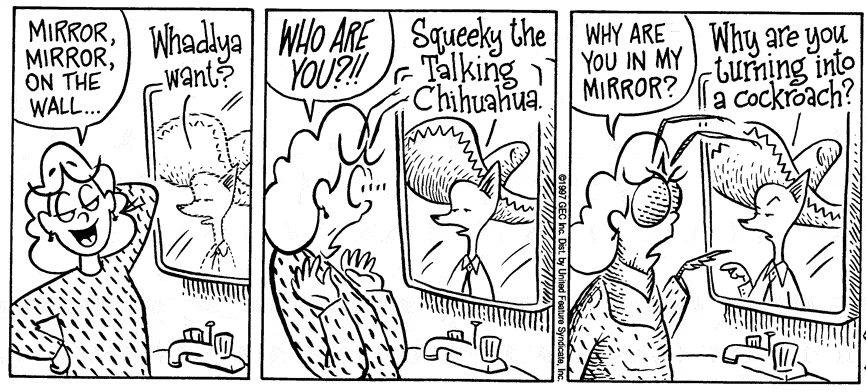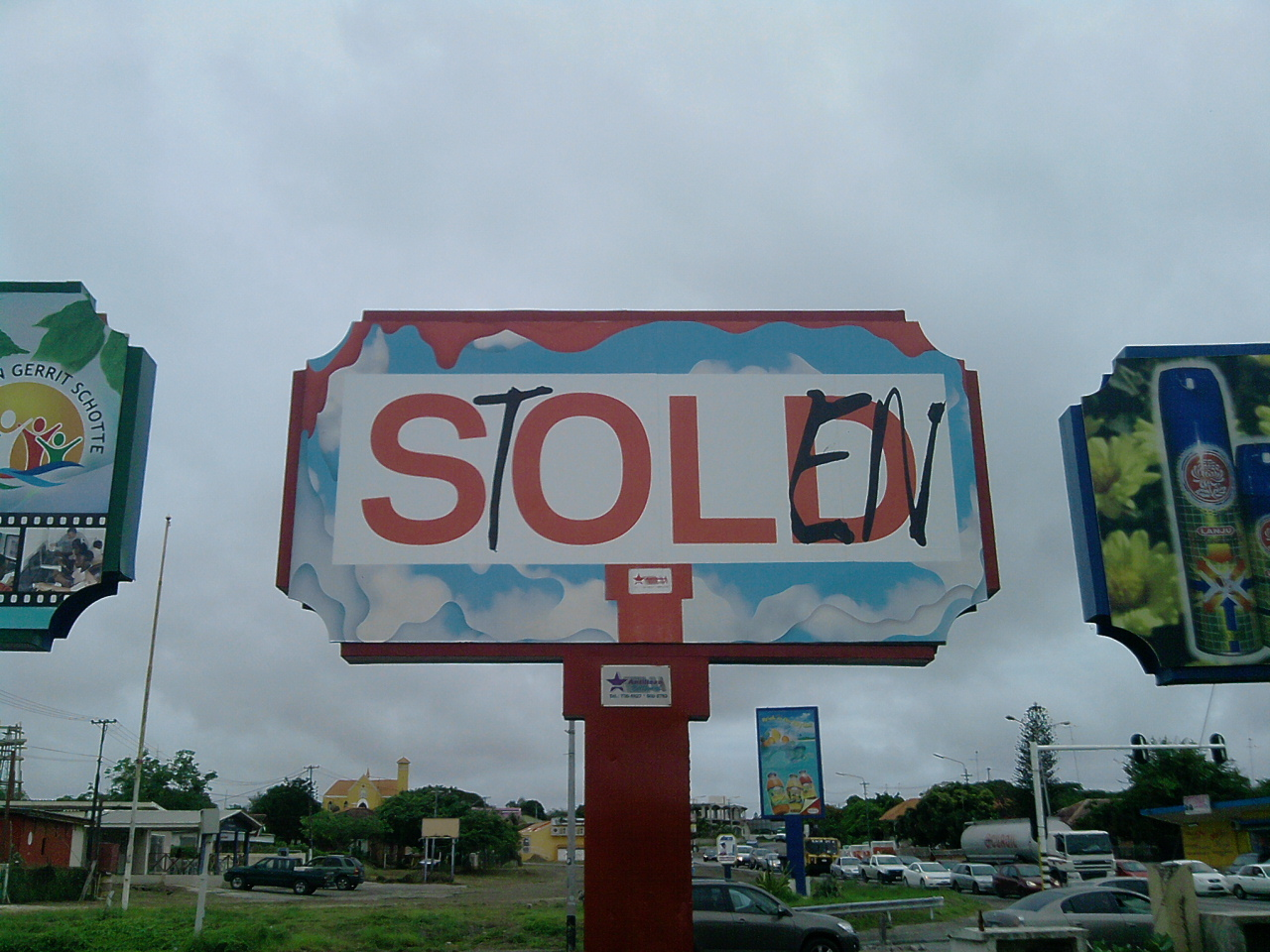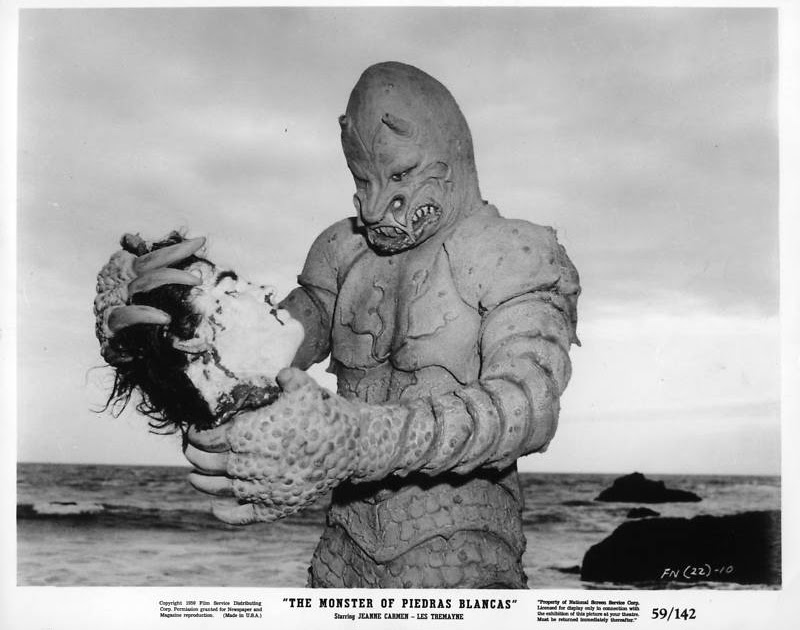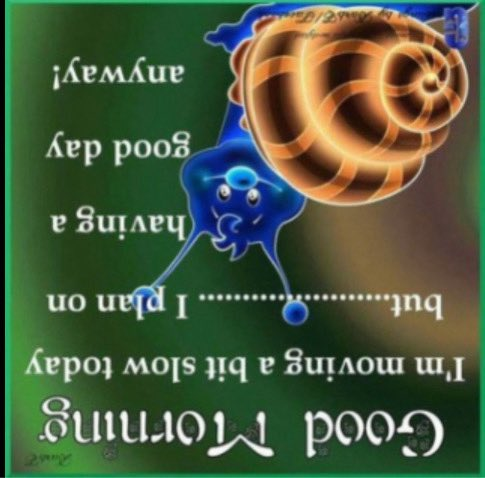created, =this.created & modified, =this.modified
tags:y2025aggregatorfakevandal
Calibri in Forgery
Calibri was the default typeface of MS Office. If the typeface appears on a document, prior to the public release of Calibri (2007) if can be inferred to be a fake.
- In 2017, Gerald McGoey, former CEO of Look Communications, filed for personal bankruptcy. He produced documents showing he has transferred parts of his estate to be held in trust for his children. These documents, allegedly signed in 1995, were typed out in Calibri
Card Forgery
Many office printers add metadata to printed sheets in the form of tiny yellow dots that can’t be seen with the naked eye.
Millions of Dollars of Prototype Pokémon Cards May Be Forgeries, Retired Creatures Employee Involved
This isn’t present on large offset printers. A collection of Pokémon playtest cards were discovered to be inauthentic due to this feature.
CDS
Adobe Photoshop has a Counterfeit Deference System that prevents duplication of banknotes.
Cy Twombly Kiss
Preliminary Theory on Kissing - Rindy Sam
created,
$=dv.current().file.ctime& modified,=this.modifiedtags:kissingvandalism rel: Hans-Joachim Bohlmann Disordered Attention - How We Look at Art and Performance by Claire BishopTitle
I’m continuing to research about vandalism (the various forms and reason), and attention.
There’s a Cy Twombly exhibit happening in NYC right now while reading about it, I noticed one of his works had been famously vandalized. This entry collects some information on this case.
A woman who kissed a £1.37m painting, leaving a lipstick stain, has been ordered to pay 1,500 euros (£1,074) in damages to its owner by a French judge.
Cambodian-born Rindy Sam told the court in the southern French city of Avignon that she was “overcome with passion” when she saw the painting in July.
Not all vandalism is paint and knives; in 2007, artist Rindy Sam kissed the Phaedrus, an all-white canvas, leaving a red lipstick smear. Attempts to remove the mark, using 30 different chemicals, failed. Sam was arrested and convicted of “voluntary degradation of a work of art.” She was ordered to pay 1000 euros to the owner, 500 euros to the gallery, and 1 euro to the painter. Her defense for her act was this: “It was just a kiss, a loving gesture. I kissed it without thinking; I thought the artist would understand… It was an artistic act provoked by the power of Art.”
Cy on his work stated To paint involves a certain crisis, or at least a crucial moment of sensation or release. Crisis by no means limited to a morbid state, but could just as easily be an ecstatic impulse.
In Court:
She wore the same red lipstick to court. “I just gave a kiss. It was a gesture of love,” she said. “When I kissed it, I did not think it out carefully, I just thought the artist would understand.” The prosecution described her kiss as a “revolting bestial act of cruelty,” “a rape,” and “aggressive as a punch.” The language of consent informed the statements made by the plaintiff’s lawyer, Agnes Tricoire, who said, “I do not share her vision of love. For me, love requires the consent of both sides.”
Link to originalThe action of Rindy Sam seems to illustrate Kenya Hara’s theory about how paper compels us to make a mark. Phaedrus being Plato’s work on erotic love it seems fitting that the mark is a kiss
Karl Sim
New Zealand art forger.
Sim noticed his art from school being auctioned off as originals of other artists, and from there started forging on purpose. By selling the artwork through his shop, it created provenance, bolstering the claim of authenticity. By signing the artist’s name on the pictures, he sold them as original, genuine pieces of art.
The police found it very difficult to investigate because no-one wanted to have paintings they had spent money on to be discovered to be fakes.
Forgery
The idea that a forgery can exist and be verified, but is left willingly ignorant to allow the appearance of an original work, or allow circulation.
I was thinking of forgery as a type of vandalization (they seem related) where an object is made in place of another (that could exist.)
Imagine you took a painting, and made the exact replica of the painting over the original painting.
It is as if the entire painting is drawn on, a vandalization that produces the original work.
Imagine someone who copies all your work, but is subtly evil.
Imagine someone who copies all your work, but is more successful than you (making you a copy).
Borges
After writing the above, I find some reference to a Borges story I’ve not read in A Field Guide to Being Lost by Rebecca Solnit.
Borges has a less-well-known story in which a poet so perfectly describes the emperor’s vast and intricate palace that the emperor becomes enraged and regards him as a thief.
The Parable of the Palace
The Parable of the Palace by Borges
created, 2025-02-14 & modified,
=this.modifiedtags:y2025borgesvandalismlanguageisland
rel: Islands Survey of Vandal, Fake and Replica
These parables say that representation is always partial, else it would not be representation, but some kind of haunting double. But the terra incognita spaces on maps say that knowledge also is an island surrounded by oceans of the unknown. They signify that the cartographers knew they did not know, and awareness of ignorance is not just ignorance; it’s awareness of knowledge’s limits.
The Yellow emperor shows the poet his palace.
Gradually they left behind the long procession of Western terraces: like the tiers of an almost boundless amphitheater they dropped down toward a paradise or garden whose metal mirrors and elaborate juniper borders hinted at the labyrinth. At first they let themselves get lost gleefully as if in a game.
The passages of the labyrinth are deceptive, appearing straight but subtly curved to form a circle in secret.
The walk continues through oblique rooms, gardens and imagery with inscrutable purpose. Dreams and reality becomes confused. They remain lost.
Every hundred paces a tower pierced the air; in their eyes, they were all the same color, and yet the first one was yellow and the last one scarlet, so fine were the gradations and so long the sequence.
At the last of these towers that marked the of their incredible journey, the poet, “removed of the sights that so astounded the others,” makes a composition “that some say consisted of a single line of verse” or even a single word.
Distilled in this poem is the entire enormous palace they have walked, down to the finest detail.
All of the shadows in twilight and day, all the moments lived.
The Emperor says that in doing so the poet has “taken away” his palace and by the sword the poet is executed.
Link to originalOthers tell the story differently. There cannot be two identical things in the world: as soon as the poet recited the poem (they tell us), the palace disappeared as if blasted and swept away by the final syllable. Of course, legends like this are mere fiction. The poet was the Emperor’s slave and died accordingly. His poem fell into oblivion because that was what it deserved. His descendants are still searching for the word that is the world, but they will not find it.
Rudy Kurniawan
Is an Indonesian man who was convicted of wine fraud, selling limited edition bottles labeled with a fictitious vintage. Many of his bottles remain in private collections.
As of 2023, Kurniawan has been counterfeiting wines as a party trick at exclusive dinners in Singapore, so that his creations can be compared to the originals
Rare Book
Rare Book with Crayon on it, Vandalism
created,
$=dv.current().file.ctime& modified,=this.modifiedrel: Bug on SensorI have to investigate the worth of a rare book with crayon on it. Let’s say there’s the last remaining copy, of the most ultimately rare and culturally important book.
This book is accidentally defaced by a child with a crayon, or a page is torn.
They can attempt to repair it. How would that affect its worth?
Willful defacement and destruction of art stretches back to the 455 AD Vandal Sack of Rome and even earlier. Iconoclasm was widespread during the subsequent English Tudor Reformation. The Germans even specifically refer to “Beeldenstorm” (translating as “statue storm”) relating to the destruction of Catholic art and artifacts.
In another special mention, Monet himself committed a famous act of art vandalism. A hotly anticipated Paris exhibition of his art was about to launch in 1908. Before the doors opened however, the artist destroyed all his paintings with a knife and paintbrush.
Vaclav Pisvejc and Hans-Joachim Bohlmann
The vandal was identified as Vaclav Pisvejc, a 57-year-old man, who had previously vandalized other works of art, including defacing Urs Fischer’s sculpture Big Clay #4 with spray paint, and setting fire to a cloth draped over a replica of Michelangelo’s David.
Can vandalism be intervention?
Link to originalrel:Disordered Attention - How We Look at Art and Performance by Claire Bishop. Can the vandal be a performance artist?
Hans-Joachim Bohlmann
created,
$=dv.current().file.ctime& modified,=this.modifiedtags:artvandal rel: Rare Book with Crayon on it, VandalismHans-Joachim Bohlmann (20 September 1937 – 19 January 2009) was a German serial vandal who primarily targeted artworks at public exhibitions. Between 1977 and 2006, he damaged over 50 paintings worth more than 270 million Deutsche Marks (about 138 million euro) by such artists as Rubens, Rembrandt and Dürer.
On 11 March 1977, his wife fell from a window while cleaning and died from injuries soon after. According to Bohlmann, the death of his wife turned him to vandalism. Previously, he often visited museums with his wife and saw the importance of art in society. He then started to buy sulfuric acid at pharmacies and spray it on paintings.
In his attacks, Bohlmann was primarily targeting the faces of the personages, trying to inflict maximum damage. Bohlmann’s activity was not restricted to paintings and museums; he ignited an altar in Lübeck and sprayed hundreds of tombstones with swastikas at night in Hamburg. The resultant outrage in the press encouraged him. As he felt he was becoming a celebrity, he abandoned the antidepressant drugs he had been taking.
Link to originalIn Ochsenzoll he attended art therapy and for nine years painted pictures, almost every day, with a total number of about 1,500.
The Menace of Mechanical Music - 1906
created, 2025-02-12 & modified,
=this.modifiedtags:y2025musicfakereplicaelitismgatekeeping
Thought
Against the new technology the time, the phonograph and reflections on copyright.
For John Philip Sousa anything but the live performance was fake? A recording was an inauthentic, soulless musical experience.
Recorded music would convince people they don’t need to learn instruments themselves, leading to the death of a soul in music.
There’s a lot wrong with the outcomes of this replicated presented here, but the problems still affect us (AI art trained on artists songs etc.) and have been magnified through technological change to the extent that in places it is drifting towards correctness.
“And now, in this the twentieth century, come these talking and playing machines, and offer again to reduce the expression of music to a mathematical system of megaphones, wheels, cogs, disks, cylinders, and all manner of revolving things, which are as like real art as the marble statue of Eve is like her beautiful, living, breathing daughters.”
Sousa compares this change to the introduction of the English sparrow, welcomed in all innocence but within no time multiplied itself into the “dignity of pest, to the destruction of numberless native songbirds.”
Thought
Some things: Recorded music might be the only way for people to experience certain genres or expose themselves to new musical ideas. Broadcast audio can distribute to many. There is also soul in choice of music and critique of music. Music doesn’t need to be human (and can have minimal human involvement) but the absence of the human from all music would be a regression. But also, Live music is important. Consuming patterns dominate (even replication of a song has a soul, but is difficult). Analysis would need to look not just at a song being made, but the complete removal of humans from the creation of music, or an attempt at killing off music, or analysis of genre forming.
There will be a deterioration in American music and taste, by virtue of music by multiplication of musical-reproduction machines.
Thought
Sousa wrote this in his time with the technology present then. Recording quality and hardware was not what it is today.
Does his point change with modern musical engines?
From the days when the mathematical and mechanical were paramount in music, the struggle has been bitter and incessant for the sway of the emotional and the soulful.
Music rebelled against its mathematical basis to find life and the recording is a return to sterility, and lifelessness.
The nightingale’s song is delightful because the nightingale herself gives it forth.
For him, it is killing the amateur. Instruments are not being purchased, in favor of listening devices. It also kills the teachers left without students.
Tireless replica:
The country dance orchestra of violin, guitar and melodeon had to rest at times, and the resultant interruption afforded the opportunity for general sociability and rest among the entire company. Now a tireless mechanism can keep everlastingly at it, and much of what made the dance a wholesome recreation is eliminated.
Reproduction is possible *without a penny of remuneration
The composer of the most popular waltz or march of the year must see it seized, reproduced at will on wax cylinder, brass disk, or strip of perforated paper, multiplied indefinitely, and sold at large profit all over the country, without a penny of remuneration to himself for the use of this original product of his brain.
Asked if he claimed the right to take one of my compositions and use it in connection with his mechanical device without compensation to myself, his unselfish reply was: “Under the Constitution and all the laws of the land, I say Yes, decidedly!”
Is the perforated paper roll a copy of the composers staff notation?
rel:Transmutation and Transformation“We are of the opinion that a perforated paper roll, such as is manufactured by defendant, is not a copy of complainant’s staff notation, for the following reasons: “It is not a copy in fact; it is not designed to be read or actually used in reading music as the original staff notation is; and the claim that it may be read, which is practically disproved by the great preponderance of evidence, even if true, would establish merely a theory or possibility of use, as distinguished from an actual use. The argument that because the roll is a notation or record of the music, it is, therefore, a copy, would apply to the disk of the phonograph or the barrel of the organ, which, it must be admitted, are not copies of the sheet music. The perforations in the rolls are not a varied form of symbols substituted for the symbols used by the author. They are mere adjuncts of a valve mechanism in a machine. In fact, the machine, or musical playing device, is the thing which appropriates the author’s property and publishes it by producing the musical sounds, thus conveying the author’s composition to the public.”
Who is responsible for the acts of the reproduction machine?
May I ask, does this machine appropriate the author’s composition without human assistance? Is the machine a free agent? Does it go about to seek whom it may devour? And if, as quoted above, the machine “publishes it,” is not the owner of the machine responsible for its acts?
Could anything be more blamable, as a matter of principle, than to take an artist’s composition, reproduce it a thousandfold on their machines, and deny him all participation in the large financial returns, by hiding back of the diaphanous pretense that in the guise of a disk or roll, his composition is not his property?
His final point here comments on a chilling effect. Rather than publish their works, which would just be consumed by these engines, maybe they will exist as a private art and leave it in controlled manuscripts.
Link to original
Détournement
In Situationist International Anthology Debord talks about “Detournement”, meaning “rerouting, hijacking” in French, is a technique developed in the 1950s, defined as “the integration of present or past artistic productions into a superior construction of a milieu.”
“Turning expressions of the capitalist system and its media culture against itself.”
A billboard advertisement which has been turned into détournement by modifying the text.

The meaning of the detourned work is antagonistic and antithetical to the original work, otherwise it is called a “recuperation.”
Two types of detournement exist.
- minor, where elements that are in themselves no big deal, such as a snapshot or everyday object, are assembled and draw meaning by being placed into a new context.
- deceptive, where already significant elements like a philosophical text or artwork take on new meaning by being placed in new context.
Some excerpts: Transmutation and Transformation:
Any elements, no matter where they are taken from, can serve in making new combinations. The discoveries of modern poetry regarding the analogical structure of images demonstrate that when two objects are brought together, no matter how far apart their original contexts may be, a relationship is always formed.
It goes without saying that one is not limited to correcting a work or to integrating diverse fragments of out-of-date works into a new one; one can also alter the meaning of those fragments in any appropriate way, leaving the imbeciles to their slavish preservation of “ci- tations.”
Survey of Vandal, Fake and Replica
A slogan like “Plagiarism is necessary, progress implies its is still as poorly understood, and for the same reasons, as the famous phrase about the poetry that “must be made by all.”
Comic Strip Switcheroo
On April Fools day 1997, forty-six syndicated cartoonists traded their comic strips without telling their editors.comics
One artist drew the strip with his nondominant hand, while another pair swapped their usual roles. Charles Schulz and Patrick McDonnell were slated to each other’s strips but ultimately did not participate because they doubted the idea’s viability.

In comics the term for intentionally copying a cover, panel or page without telling the original artist is called a Swipe. Many Golden Age artists kept “swipe files” of material to be copied as needed.
 There is also a long tradition of comics artists using fine art as “inspiration” as well.
There is also a long tradition of comics artists using fine art as “inspiration” as well.
Swiping brings to mind the amusing conundrum of whether an artist can swipe from himself. One example is two almost-identical Peanuts strips by Charles Schulz done almost ten years apart.
Similarly, “cloning” might be done, which is style appropriated from another artist.
Compared to an “homage” where the source is generally notified, rather than being “exposed.”
Brandalism
Brandalism (mix of brand + vandalism) is an activist organization which engages in subvertising, culture jamming and protest art.
In many cases, the subverted advertisements distributed by Brandalism artists are deliberately intended to look similar to the original advertisement. Some brand owners have consequently claimed that some instances of Brandalism may violate copyright or trademark laws.
Techniques used are painting over advertisements in public spaces.

In order to install their satirical adaptions of advertisements, Brandalism artists sometimes create their own high visibility vests with fake brand labels of large outdoor advertising companies such as JCDecaux and Clear Channel Outdoor printed onto them. This way, they can operate in plain sight and avoid drawing attention to themselves.
Doppelgänger brand image
A doppelgänger brand image is a parody logo or narrative intended to highlight ethical issues regarding the product advertised. They are commonly associated with the brand’s lack of authenticity, and most are created as a form of individual protest, either posted digitally on social media, or displayed as physical graffiti.
The Void in Place
created 2025-03-07, & modified,
=this.modified/r/place was a recurring collaborative project and social experiment in which participants shared a communal canvas. Each user was granted, at timed internals, the placement of a single pixel.
The Void was a community in the experiment in /r/place with the mission to fill the entire canvas with black pixels.
The Void itself (and the void itself, a mostly community random entity) experienced a kind of “vandalism” in the form of “confetti.” Confetti are random dots of color in the desired uniformed black pixels of the Void. A specialized part of the Void community called “Anti-Confetti Drones” were deployed to clear the confetti. “The ACD developed a small sub-culture of exceptionalism, believing that while their job was more mundane, it was essential to the Void’s survival”
The Void spread by expansive tendrils which “infected” other cohesive arts, the members of this group called the “Tendril Expansion Crew.”
Link to originalThought
What if your art piece claims all blank pieces of paper, without consent? Any act of drawing is vandalism on your work. What if your art piece is the spaces between the art in the gallery?
Fetch and Doppelgänger
In folklore, a Fetch/Doppelgänger is a kind of astral replica of a human being (often seen as a death omen) particular to Irish/German lore respectively.
Temp Tracks
As a film is being made, often a temporary score (often from other licensed works) will be used to guide the tone of the scene. This style will then be emulated the final film.
While some feel that having to follow a temp track can be limiting for a composer, it can be a useful tool in finding the right style of music for a particular scene and can be a time-saver for both the composer and director.
Thought
What if we could find out the temp tracks and return them to the work?
Echo
Echo
created 2025-04-08, & modified,
=this.modifiedrel: Echopraxia Survey of Vandal, Fake and Replica
In audio and acoustics, echo is a reflection of sound that arrives at the listener with a delay after the direct sound.
The word echo derives from the Greek ἠχώ (ēchō), itself from ἦχος (ēchos), ‘sound’. Echo in Greek mythology was a mountain nymph whose ability to speak was cursed, leaving her able only to repeat the last words spoken to her.
Thought
Both succumb to duplication. Narcissus finds himself transfixed with a reflection (it’s own echo), a double. Echo may only repeat, a reflection or replica.
With this, both also communicate through proxy.
Echo was a very talkative Nymph, whom the goddess Venus admires for her voice and song. She distracted the goddess Juno for hours while her husband Jupiter had affairs with other Nymphs. One day, when Echo tricks Juno into believing that Jupiter was in the city, Juno curses Echo by making her unable to initiate a spoken sentence on her own and instead only being able to finish a sentence started by someone else. “Yet a chatterbox, had no other use of speech than she has now, that she could repeat only the last words out of many.”
She falls in love at first sight with Narcissus. During a hunt, Narcissus becomes separated from the group and calls out “is anyone there” and hears Echo repeat his words. He says, “come here” only to have the same words return to him. Finally, he shouted, “This way, we must come together.” Taking this to be a reciprocation of her love, Echo concurred ecstatically, “We must come together!”
In her delight, Echo rushed to Narcissus ready to throw her arms around her beloved. Narcissus, however, was appalled and, spurning her, exclaimed, ‘Hands off! May I die before you enjoy my body.’ All Echo could whisper in reply was, ‘enjoy my body’ and having done so she fled, scorned, humiliated, and shamed.
Nemesis caused him to fall in love with his own reflection in a pool of water where he wasted away and died, unable to take his eyes away from the beautiful youth he did not recognise as himself. Narcissus, looking one last time into the pool uttered, “Oh marvellous boy, I loved you in vain, farewell”, Echo too chorused, “Farewell.”
When the time came for Narcissus’s funeral, people came to where he lay, but found no body. All that was left of Narcissus was the six-petalled white flower arranged around a golden center that was named after him.
Eventually, Echo, too, began to waste away. Though she was immortal, her body faded and her bones turned to stone until all that remained of Echo was the sound of her voice.
Link to original
Marginalia
rel:Marginalia
In Marginalia of books studies, there is this concept of Anathema, which is a curse inscribed upon books to prevent them to be stolen, or modified.
One that is mentioned
klaxon here for lines below to hasten scroll and shun ye slowe pass along avert thine eye for spring latent errors when he modifye
I find also, fittingly:
“I warn everyone who hears the words of the prophecy of this scroll: If anyone adds anything to them, God will add to that person the plagues described in this scroll. And if anyone takes words away from this scroll of prophecy, God will take away from that person any share in the tree of life and in the Holy City, which are described in this scroll.” - John of Patmos’s Book of Revelation
Plagiarism Word Origin
In the legal terminology of the Empire, the heinous crime of man-stealing was known as plagium, and a person who stole a child or slave, or tried to take a free person and sell him into slavery, was known as a plagiarius. That Martial would use such a term in describing the borrowing by one man of another man’s words as his own indicates how severe a crime it was considered to be. Plagium, of course, became plagiare in French, and thus, in English, plagiarism,” and did not again become a crime until after the Middle Ages had passed.
Knockoff, Bootleg, Dupe
Counterfeit watch
Counterfeit = against + to make, to do.
These style of watches were a problem when countries started emulating France as the leading producers of quality clocks and watches. Less obvious forgeries had names that mimicked English sounds, such as Samson or Simpton. The Swiss could not compete, so surrendered to mass-market to US firms and focused on branding high end status symbols.
It is a common myth that a genuine watch can be determined by the fluid sweeping movement of the hand. Observed closely, not even a Rolex will provide a smooth once per second start/sweep. but is composed of multiple movements per second.
Previously counterfeit could be determined by inspection of shoddy craftsmanship, however, it is often the case that only opening the device can the validity be made.
Frankenwatches exist, where high quality replicas are modified with genuine parts, like dials, hands and bracelets. It is possible for a frankenwatch to be composed entirely of genuine parts.
The concept of a homage watch also exists. It is a legal watch, distinct from counterfeit imitating the design of a famous watch, without infringing upon IP.
Shanzhai
A Chinese term meaning mountain fortress/camp whose contemporary use encompasses counterfeit, parody and imitation products or events and the culture surrounding them.
These goods are viewed as rebellion against the established commercial market, adopting the spirit of opposition and individually originally associated with the Song dynasty.
Thought
There is a bit of Sweded films to this.
Often this imitation isn’t concealed. What these events have in common is that they all imitate high-end, popular yet authoritative events in which grass-roots power usually has no participating role.
Mockbuster
A mockbuster is a film that meant to exploit a major motion picture by emulating the title or subject. In doing so they are able to capitalize on the buzz, or marketing without major contribution and maximize profits. They ride the wave.
An example is the monster of piedras blancas which emulates the creature from the black lagoon.

Dupe
Dupes are like counterfeits but unlike counterfeits they do not copy trademarked brand names or logos.
Fashion has a close history to dupes, dating back to the early 1900s where designers would copy from famous Paris fashion houses, bringing designs to US department stores would would make replicas.
While some designs can be protected with a design patent that lasts 15 years, the cost and time to receive a design patent, which is typically over year, can be prohibitive due to the cyclical and seasonal nature of fashion.
Poor Image
In Defense of the Poor Image by Hito Steyerl
created, & modified,
=this.modifiedrel: The Perception Machine - Our Photographic Future between the Eye and AI by Joanna Zylinska Generation Loss
The poor image has been uploaded, downloaded, shared, reformatted, and reedited. It transforms quality into accessibility, exhibition value into cult value, films into clips, contemplation into distraction. The image is liberated from the vaults of cinemas and archives and thrust into digital uncertainty, at the expense of its own substance. The poor image tends towards abstraction: it is a visual idea in its very becoming.
The poor image is an illicit fifth-generation bastard of an original image.
Cinema is the flagship, more affordable derivatives of the same images circulate as DVDs, on broadcast television or online, as poor images.
Refusing to present clips because a film projector was not available (though there was a standard DVD and video projector, and speakers.) The audience is left to wonder what the images might have looked like.
…resistant or non-conformist visual matter disappeared from the surface into an underground of alternative archives and collections, kept alive only by a network of committed organizations and individuals, who would circulate bootlegged VHS copies amongst themselves.
Thought
It’s like the Streisand effect, but with decay.
Blurred AVI files of half-forgotten masterpieces are exchanged on semi-secret P2P platforms. Clandestine cell-phone videos smuggled out of museums are broadcast on YouTube. DVDs of artists’ viewing copies are bartered. Many works of avant-garde, essayistic, and non-commercial cinema have been resurrected as poor images. Whether they like it or not.
The rampant privatization of intellectual content, along with online marketing and commodification, also enable piracy and appropriation; it gives rise to the circulation of poor images.
Juan Garcia Espinosa, wrote in Cuba in the late ‘60s about “Imperfect Cinema.” “Perfect Cinema technically and artistically masterful, is almost always reactionary cinema.” Imperfect cinema merges art with life and science, blurring the distinction between consumer and producer, audience and author. It insists upon its own imperfection.
He clearly predicts that the development of video technology will jeopardize the elitist position of traditional filmmakers and enable some sort of mass film production: an art of the people. Like the economy of poor images, imperfect cinema diminishes the distinctions between author and audience and merges life and art. Most of all, its visuality is resolutely compromised: blurred, amateurish, and full of artifacts.
The poor image thus constructs anonymous global networks just as it creates a shared history.
The circulation of poor images thus creates “visual bonds,” as Dziga Vertov once called them. This “visual bond” was, according to Vertov, supposed to link the workers of the world with each other.
The poor image is no longer about the real thing—the originary original. Instead, it is about its own real conditions of existence: about swarm circulation, digital dispersion, fractured and flexible temporalities. It is about defiance and appropriation just as it is about conformism and exploitation.
In short: it is about reality.
Poor Image Encounter
I encounter this image, probably passed along countless times. On close inspection there are features that are clear poor image.
- the tail of the snail has a can incongruously on it
- the right side exposes some white canvas – a crop?
- embedded in the good morning text are faint, ghostly traces of once-text. I suspect this is due to the soft stroke around the letters themselves, and the thinness of the original glyphs
- there’s further white text at the base of the snail and on the top right corner
- the airspray gradient effect background has a spiral
Each tell the story of a morning that was shared.
Digging deeper, I find a higher quality image
The glyphs are fairies or angels and the name and origin can be more clearly seen.
I also find this replica.
and the oldest instance this one,
Another variant defaced to advertise on an instagram
Link to original
Trap Street, Honey Token, Fictious Entry
A cartographic Trap street is a fake street that is written into a map with the idea that if this is detected on other maps, the work has been copied. There’s no other reason for the inclusion of the imaginary street.
More generally this a fictious entry or Mountweazel. Table entries could harbor false records, otherwise not used, which would indicate a copy.
Ghost words:
The most famous example of a ghost word is ‘dord’ which appeared in the 1934 second edition of Webster’s New International Dictionary, and was defined as meaning ‘density’. This was in fact a proofreading error (the original entry said ‘D or d, cont/ density’ and was referring to the abbreviation ‘d’). It took five years for an eagle-eyed editor to spot it, and another eight years before it was removed from the dictionary.
In modern times of databases, honeytokens are used to similar effect. Admins can track data through complex networks. I’ve programmed websites in the past which used honeypot fields, which would otherwise be unused to humans but a automated attack might fill out. Any submission with this record, would then be dropped as it had possibly ill intentions.










